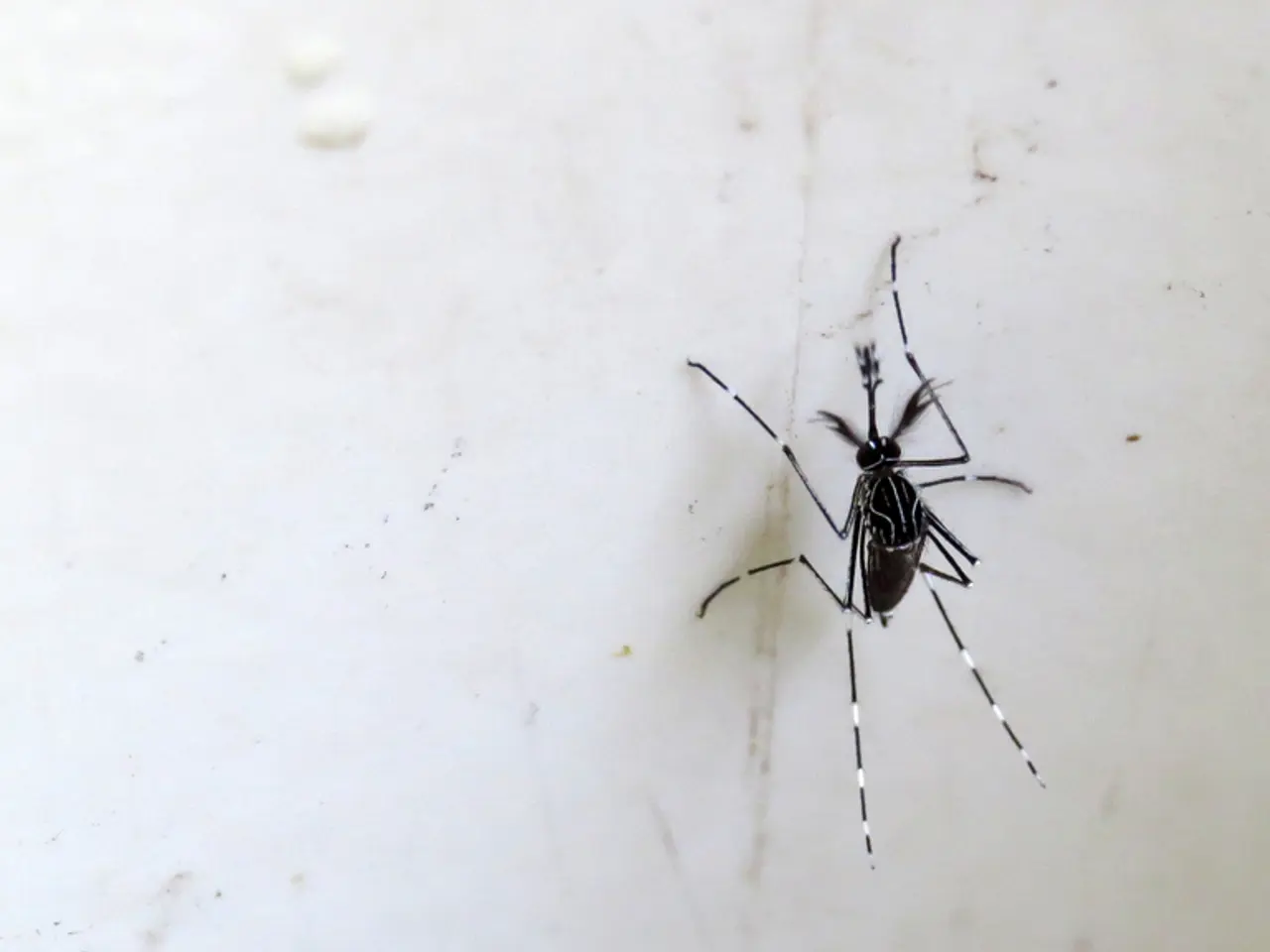Chikungunya Virus Makes its Way to Germany's Border
Is there a cause for concern among Germans regarding the chikungunya virus?
Recent reports have confirmed the first case of a person contracting the Chikungunya virus in Alsace, just a few meters from the German border. This mosquito-borne disease, which derives its name from a Makonde word meaning "the one who walks bent over," has been detected in 119 countries around the world, including Germany, putting 5.6 billion people at risk [1].
Understanding Chikungunya
Chikungunya is primarily transmitted to humans via the bite of an infected female Aedes mosquito, specifically the species Aedes aegypti and Aedes albopictus [2]. Unlike many other viral diseases, Chikungunya does not spread directly from person to person but requires the mosquito vector to transmit the virus [2].
The most common symptoms of Chikungunya are high fever and severe joint pain, often in the wrists, ankles, and knees. Other possible symptoms include joint swelling, muscle pain, headache, rash, nausea, fatigue, and sometimes gastrointestinal or eye symptoms [3]. The incubation period for Chikungunya ranges from two to 12 days [2].
Preventing Major Outbreaks in Germany
To prevent major outbreaks of Chikungunya in Germany and other European countries, several preventive measures are in place or recommended:
- Vaccination: Two vaccines are available in Germany:
- Ixchiq® by Valneva, approved for individuals aged 18 and over as of March 2025, and
- Vimkunya® (adjuvanted VLP vaccine) by Bavarian Nordic, approved in February 2025 for those aged 12 and over [2]. These vaccines provide high antibody levels in most recipients, reducing the risk of infection.
- Mosquito Control: Public health guidelines emphasize the importance of controlling mosquito populations through measures such as eliminating breeding sites (e.g., stagnant water) and using insecticides [4].
- Travel Awareness: Travelers to areas with active Chikungunya outbreaks are advised to take protective measures, such as using insect repellents and wearing protective clothing, to reduce exposure to infected mosquitoes [3].
- Surveillance and Monitoring: Health authorities monitor mosquito populations and disease activity to quickly identify and respond to any potential outbreaks [4].
These measures aim to mitigate the risk of Chikungunya transmission in Germany and prevent significant outbreaks by focusing on both personal protection and environmental control.
Current Situation in Europe
An estimated 800 imported cases of Chikungunya have been reported in France since May [5]. The risk of major outbreaks in Central Europe is not particularly high at present, but as mosquito species native to warmer climates move north due to climate change, the risk of endemic Chikungunya in Central Europe increases [6].
Tiger and yellow fever mosquitoes, previously non-existent in Germany, are now widespread in Bavaria, Baden-Württemberg, Rhineland-Palatinate, and Hesse [7]. These species, along with the native mosquito populations, pose a potential threat for the spread of Chikungunya within Germany and other European countries.
However, it is important to note that the pathogen is not yet native to the region and has only been introduced by travelers so far [5]. This underscores the importance of travel awareness and personal protection measures for those visiting areas with active Chikungunya outbreaks.
Stay informed and take precautions to protect yourself and your community from the spread of Chikungunya. For the latest updates on the virus and preventive measures, consult your local health authority or the World Health Organization's website.
- To ensure overall health and wellness, it's crucial for individuals seeking a better understanding of Chikungunya to recognize its connection with environmental science, as its spread is primarily through infected mosquitoes, particularly species like Aedes aegypti and Aedes albopictus that thrive in various environmental conditions.
- As the field of science continues to evolve, advancements in medical-conditions research, including vaccines for Chikungunya, have the potential to greatly impact health-and-wellness practices, as demonstrated by the introduction of recently-approved vaccines in Germany like Ixchiq® and Vimkunya®.




